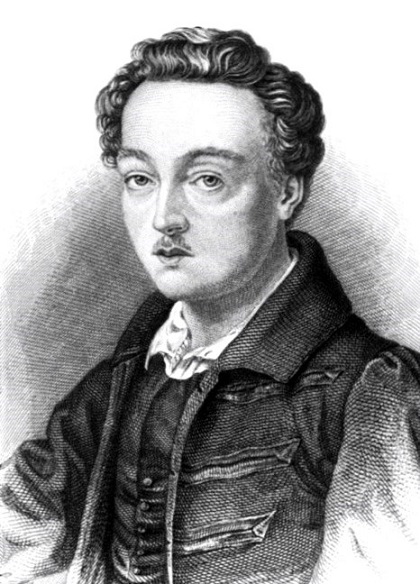Georg Buchner (Georg Buchner)

Playwright. Although Georg Buchner died at the age of 23, leaving only three plays and an unfinished novella, his influence has vastly execeeded his slender output. He has been hailed as a forerunner of such literary movements as Naturalism, Metaphysical Symbolism, Expressionism, the Epic Theatre of Bertolt Brecht, and the Theatre of the Absurd. His ideas and original style were so ahead of their time that his stature was not recognized for nearly a century after his death. Buchner was born in Goddelau (then in the Duchy of Hesse), Germany. He studied science and medicine in Strasbourg and Giessen. Inspired by the ideals of the 1789 French Revolution, he became a political radical and in 1834 published and clandestinely distributed “The Hessian Courier,” an incendiary pamphlet which called for the violent overthrow of the Hessian government. A warrant was issued for Buchner’s arrest and he was forced to flee to Switzerland in 1835. There, in the space of two years, he wrote his masterpieces. His first play, “Danton’s Death” (1835), is a starkly realistic account of the events leading up to the execution of French revolutionary Georges Jacques Danton, shot through with profound psychological insight and ironic humor. “Leonce and Lena” (1836), Buchner’s only comedy, explores one of his favorite themes: that there is no free will and that man’s fate is somehow predetermined. The title characters, a young prince and princess, flee their separate kingdoms to avoid arranged marriages to unknown royalty. They meet, fall in love, and marry, only to discover to their chagrin that they were intended for each other from the beginning. Although it was left in an unfinished and chaotic state, “Woyzeck” (1836) is Buchner’s greatest work. Based on actual events, it depicts how a downtrodden soldier is driven to madness and murder by a society that exploits him. It is considered the first modern tragedy and the first serious representation of the common man on the stage; Woyzeck himself is the prototype of the present-day “anti-hero”. Likewise based on fact is the novella fragment “Lenz” (1835-1836), an incomparable, stylistically brilliant retelling of an episode in the life of poet Jakob Lenz, who went insane searching for the truth in art. It is believed that Buchner completed a fourth play, “Pietro Aretino,” but it no longer exists. In the midst of this heated creative activity Buchner continued his scientific studies, and in November 1836 he was appointed a lecturer at Zurich University, becoming the youngest member of the faculty. He died of typhus four months later, cutting short a career of outstanding promise. In 1875 Buchner’s remains were transferred to the Zurichberg, a hill overlooking the city, on a site that later became the Fluntern Cemetery. His Collected Works (minus “The Hessian Courier”) were first published in 1879, and again in a corrected edition in 1909. Buchner’s plays began to be performed during World War I, after which he assumed his rightful place in the repertory of World Theatre. Composer Alban Berg adapted “Woyzeck” into his famous atonal opera “Wozzeck” (1925). (bio by: Bobb Edwards)
Born
- October, 17, 1813
- Riedstadt, Germany
Died
- February, 02, 1837
- Zürich, Switzerland
Cemetery
- Buchner Private Plot - Rigiblick
- Zürich
- Switzerland



